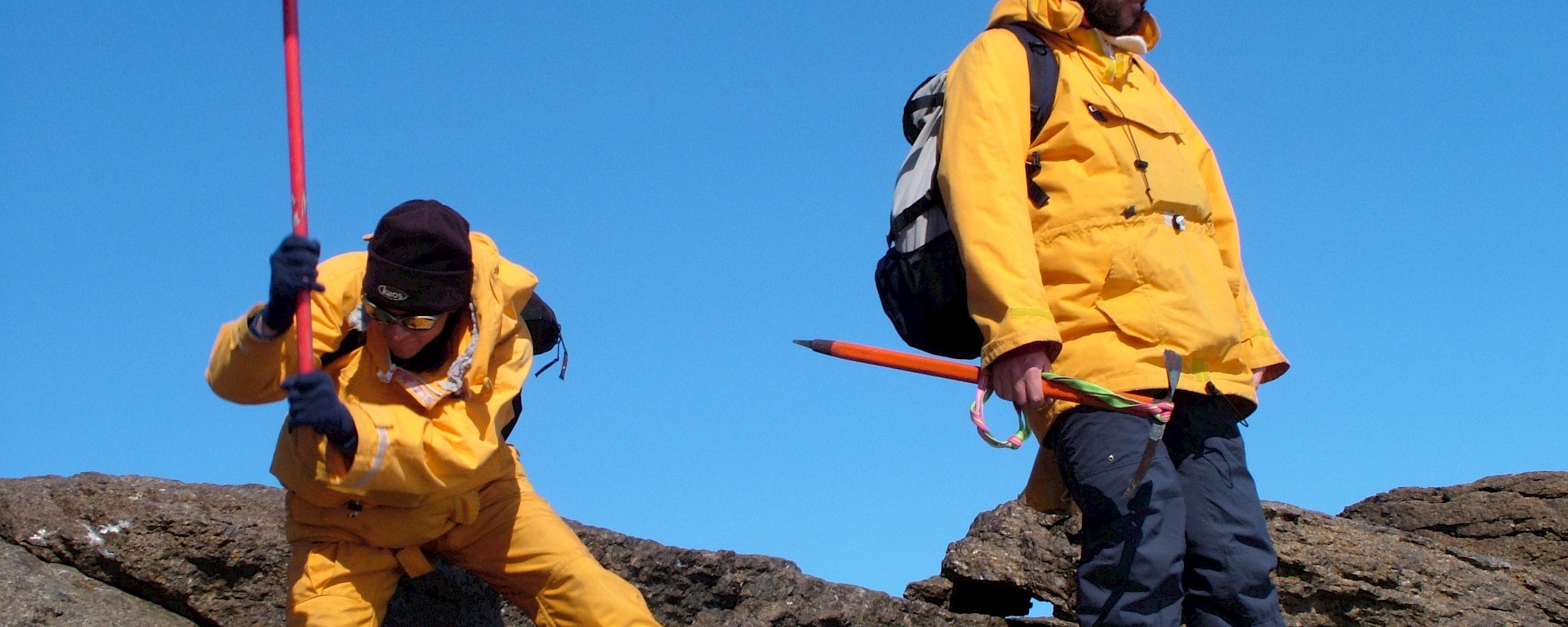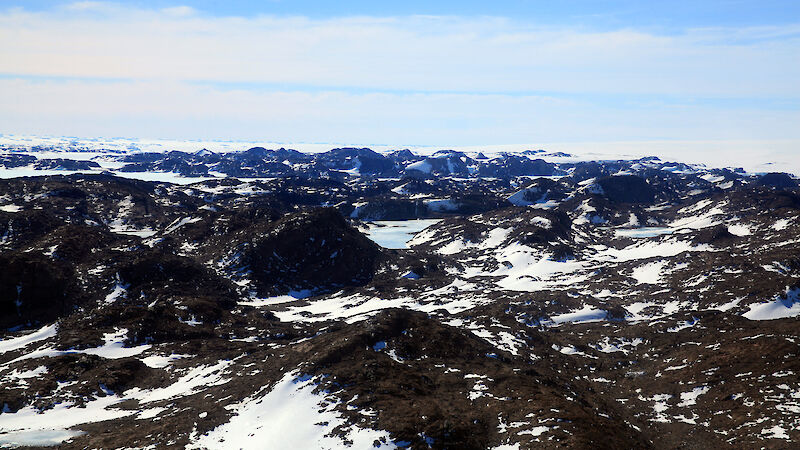Australia and Antarctica were once part of the same land mass – a supercontinent called Gondwana. The fossil record of the 2 continents is similar. Antarctica has fossils of dinosaurs, amphibians and even marsupials from prehistory.
Australia began to separate from Antarctica 85 million years ago. The separation started slowly – at a rate of only a few millimetres a year – accelerating to the present rate of 7 cm a year. Australia completely separated from Antarctica about 30 million years ago.
99% of Antarctica has a permanent blanket of snow and ice. Only about 1% of the continent’s rock base is visible. It pokes through the ice sheet in coastal outcrops, mountain ranges and nunataks.
The Transantarctic Mountains extend from the north western corner of the Ross Sea to the south western corner of the Weddell Sea. They divide the continent into two contrasting parts – East and West.
West Antarctica is smaller and has a complex geological history. West Antarctica consists of 4 land units, each with a different history. There has been major volcanic activity here in recent geological times, and there are still some active volcanic centres.
Most of East Antarctica is still not well known by geologists. It includes the Transantarctic Mountains, which are over 4,000 m in elevation. The shield is very depressed in the centre of Antarctica. Here, it carries the bulk of the Antarctic ice sheet. Large areas lie deeper than 1,000 m below sea level.



